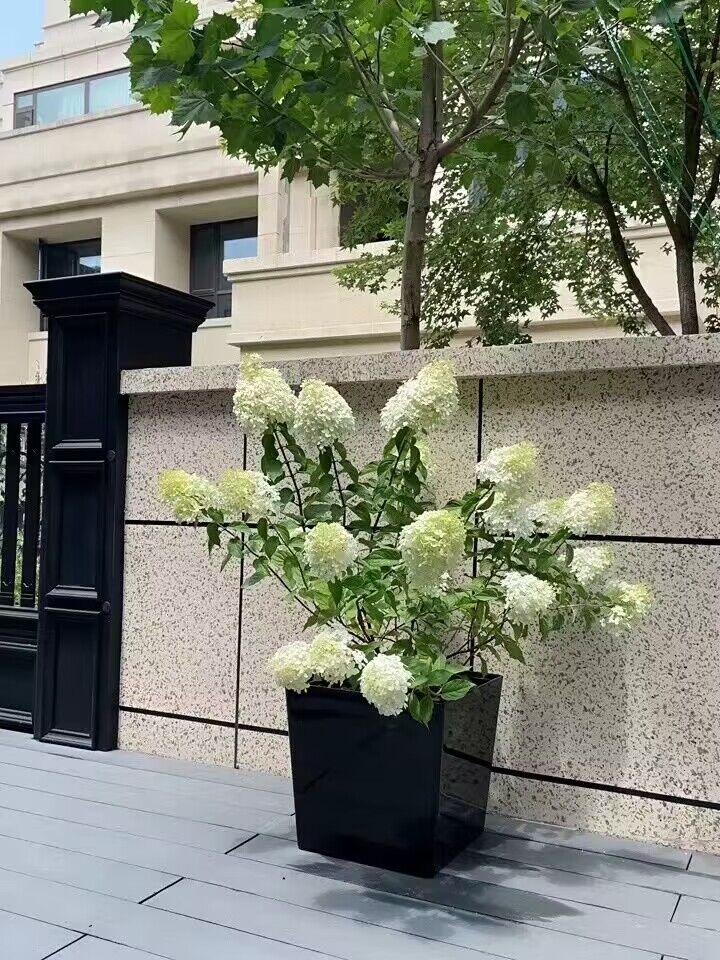The presence of vibrant blooms adorning outdoor spaces has been a timeless expression of nature's beauty. As we adorn our gardens, patios, and balconies with an array of flowers and greenery, it's fascinating to explore the evolution of the vessels that cradle these botanical wonders – the outdoor flower pots.
Ancient Beginnings:
The use of containers for plants dates back to ancient civilizations. In ancient Egypt, Greece, and Rome, people cultivated plants in various vessels made of clay, terracotta, and even marble. These early containers served both functional and decorative purposes, allowing individuals to grow herbs, flowers, and small shrubs within the confines of their homes or outdoor spaces.
Chinese Influence:
The Chinese have a longstanding tradition of container gardening, and their influence on the evolution of outdoor flower pots is noteworthy. The Chinese used ornate ceramic pots and containers for centuries, incorporating intricate designs and symbols that held cultural significance. These containers were not only utilitarian but also served as symbols of wealth and status.
Renaissance Revival:
During the Renaissance in Europe, there was a revival of interest in classical art and culture. This cultural resurgence extended to gardening, with a renewed appreciation for the aesthetic aspects of outdoor spaces. Gardens became an extension of the home, and containers, including decorative flower pots, became essential elements in the design of these Renaissance gardens.
Victorian Elegance:
The Victorian era witnessed a passion for ornate gardens and a love for exotic plants. Outdoor flower pots, often made of cast iron or decorated ceramics, became popular accessories for the grand gardens of the Victorian elite. These pots were not only functional but also showcased intricate designs, patterns, and sometimes even narrative scenes.
Terracotta Renaissance:
The use of terracotta for outdoor flower pots experienced a resurgence during the 19th and early 20th centuries. Terracotta, known for its porous nature that allows air and moisture to reach plant roots, became a favored material. The simplicity of terracotta pots, coupled with their earthy appeal, made them a timeless choice that transcended changing garden trends.
Mid-Century Modernism:
The mid-20th century brought about a shift in design aesthetics with the rise of modernism. Outdoor flower pots took on sleek and minimalist forms, often made of materials like fiberglass and concrete. These modernist pots complemented the architectural styles of the time, providing a clean and sophisticated look to outdoor spaces.
Contemporary Diversity:
In contemporary times, the world of outdoor flower pots has embraced diversity in materials, designs, and styles. From traditional terracotta pots to innovative materials like recycled plastics, contemporary outdoor flower pots cater to a wide range of tastes and preferences. Designers experiment with shapes, sizes, and colors, allowing individuals to express their personalities and create unique outdoor environments.
Functional Innovations:
Beyond aesthetics, contemporary outdoor flower pots often incorporate functional innovations. Self-watering pots, lightweight materials for easy mobility, and modular designs that cater to changing plant needs are some of the functional advancements that make gardening more accessible and enjoyable.
Sustainability in Design:
In response to environmental concerns, there is a growing emphasis on sustainable design in outdoor flower pots. Manufacturers are exploring eco-friendly materials, recyclable options, and innovative designs that promote responsible gardening practices. Sustainability has become a key consideration for those seeking not only beauty but also environmental consciousness in their outdoor spaces.
The journey of outdoor flower pots mirrors the evolving relationship between humanity and nature. What began as simple vessels for cultivation in ancient times has transformed into an art form, contributing to the beauty and character of our outdoor spaces. As we adorn our outdoor spaces with these vessels of natural beauty, we pay homage to the enduring legacy of outdoor flower pots that have stood the test of time and continue to bloom with elegance and grace.



 EN
EN  English
English 中文简体
中文简体 Español
Español























 Companies adhere to the "let plants fall in love with appropriate plant hall, let green into the tens of thousands of people for the purpose"
Companies adhere to the "let plants fall in love with appropriate plant hall, let green into the tens of thousands of people for the purpose" Fansan industry zone, Shabu Town, Huangyan, Taizhou City, Zhejiang province, China
Fansan industry zone, Shabu Town, Huangyan, Taizhou City, Zhejiang province, China +86-15325615991
+86-15325615991 +86-0576-81109093
+86-0576-81109093 +86-0576-81109093
+86-0576-81109093 yizhitang001@gmail.com
yizhitang001@gmail.com